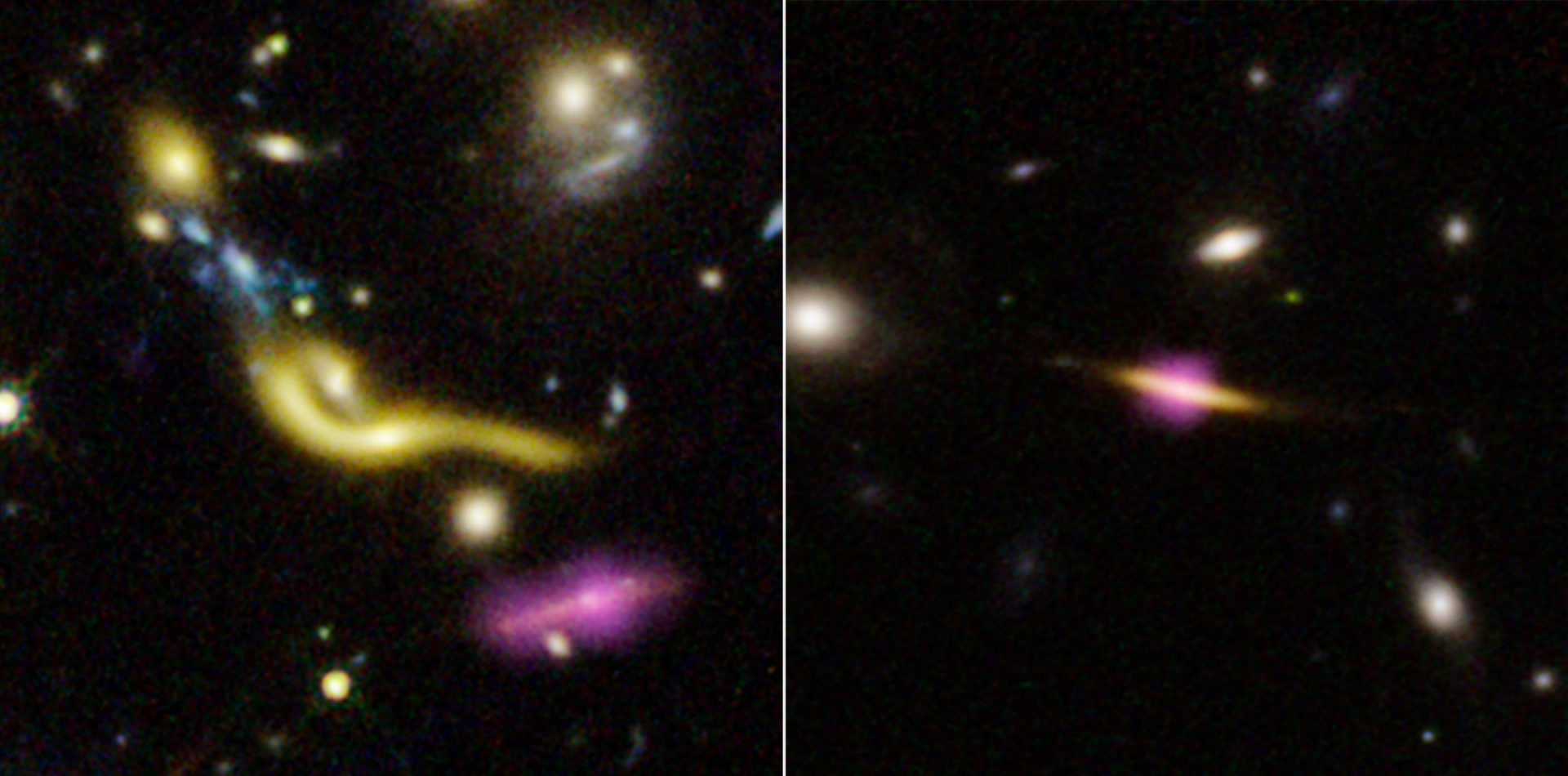As is the case with living creatures, celestial bodies like stars, planets, and even black holes bloom into existence, live, age, and then die. Some of these astronomical objects, again like living creatures, seemingly pass before their time has come. In a new study published in the journal Nature, a team of astronomers reports six such objects. These “dead” galaxies stopped cranking out stars long before their peers did.
Engadget reported on the half-dozen dead galaxies, which astronomers discovered using the Hubble Space Telescope and the Atacama Large Millimeter/submillimeter Array (or ALMA) in northern Chile. Using both the ground and space-based telescopes, the astronomers looked at six distant, massive galaxies; ones that are strongly “gravitationally lensed” by a cluster of galaxies between themselves and us here on Earth.

NASA / Joseph DePasquale (STScI)
As NASA explains, astronomers could get an outsized look at the galaxies thanks to this gravitational lensing phenomenon. As its name implies, gravitational lensing can occur when an unthinkably enormous amount of matter—like a cluster of galaxies—creates a powerful gravitational field. One that, in turn, distorts and magnifies light coming from objects behind it. In effect, the gravitational field becomes an enormous telescope lens.
The astronomers used one such “lens” to look at “dead” galaxies from when the universe was three billion years old. The “dead” moniker describes the fact that these galaxies no longer have the necessary cold hydrogen gas to make stars. Without the gas, there’s no clumping of matter that eventually leads to the formation of a star.

NASA / Joseph DePasquale (STScI)
“At this point in our universe, all galaxies should be forming lots of stars. It’s the peak epoch of star formation,” lead author Kate Whitaker said in NASA’s post. Whitaker, an assistant professor of astronomy at the University of Massachusetts, Amherst, went on to pose the question, “[W]hat happened to all the cold gas in these galaxies so early on?”
Unfortunately, the astronomers still don’t know why these galaxies shut off star formation relatively early. There are plenty of options on the table, however. Whitaker speculates that black holes in the galaxies’ centers may have turned on and heated up all of the hydrogen gas, perhaps expelling it out into space. Or maybe these particular galaxies never had much star-making fuel to begin with. Either way, we wouldn’t be surprised if NASA eventually spots “dancing ghosts” emanating from the galaxies.